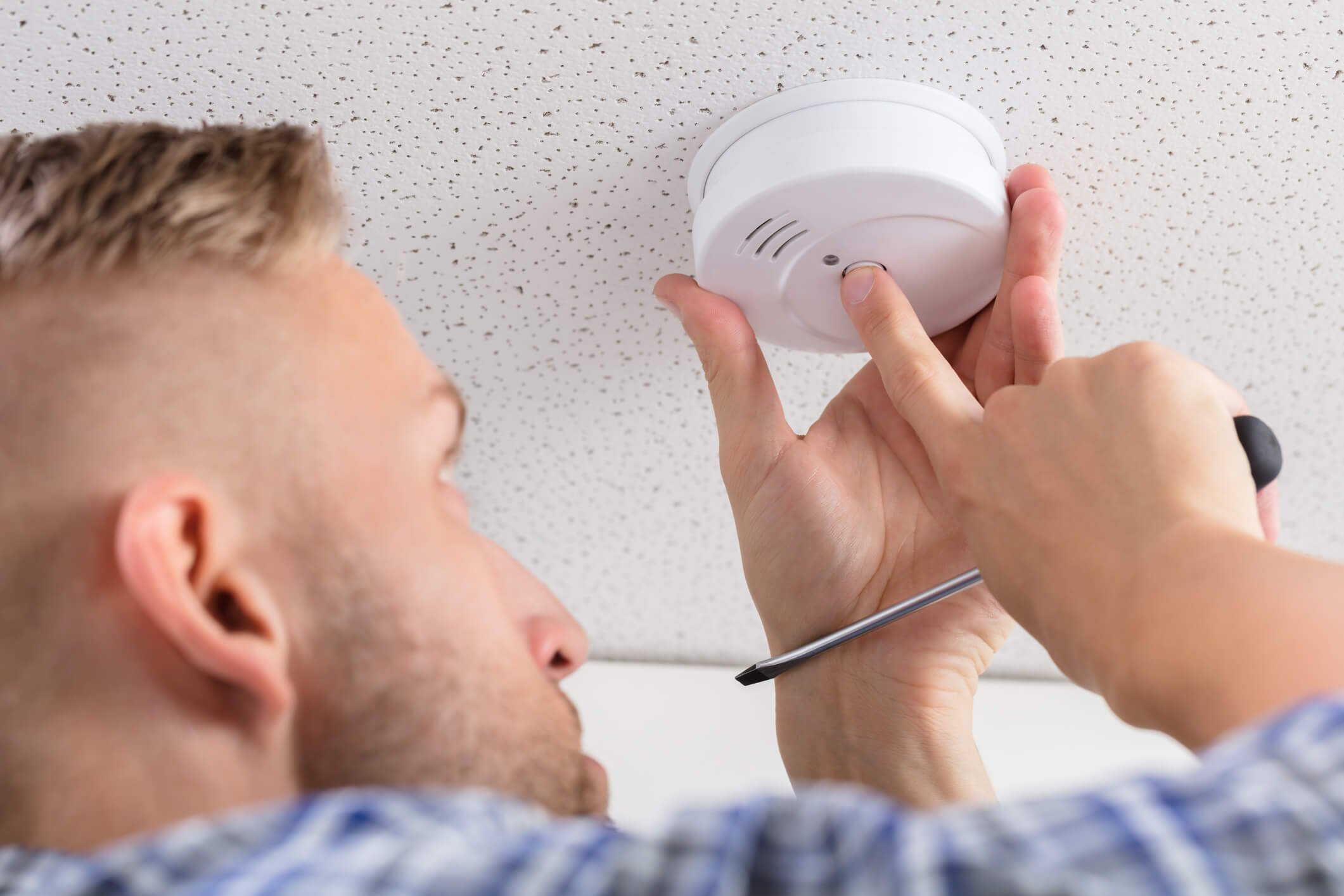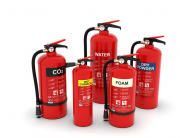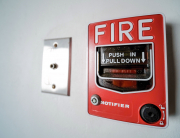Fire safety is of paramount importance for homeowners, residents and businesses. Recent statistics from the UK’s Fire and Rescue Services reveal that there were 39,045 building fires, encompassing both residential dwellings and other structures by the year 2023. This alarming figure underscores the persistent danger that fires pose to our communities and highlights the critical need for effective fire safety measures.
Thankfully, smoke alarms have emerged as one of the most potent tools in our arsenal against fire-related tragedies. Let us explore the crucial role of smoke alarms in fire safety, exploring their importance, functionality, benefits, and proper installation and maintenance.
By understanding and implementing these key aspects of smoke alarm usage, we can significantly enhance our protection against the devastating impact of fires.
Why are Smoke Alarms Important?
The importance of smoke alarms in fire safety cannot be overstated. These devices play a vital role in fire prevention and safety for several compelling reasons:
- Early Detection: Smoke alarms can detect fires in their early stages, often before flames are visible.
- Rapid Alert: They provide a loud, unmistakable warning, giving occupants crucial time to evacuate.
- 24/7 Protection: Smoke alarms work round the clock, even when occupants are asleep.
- Life-saving Potential: According to the UK’s Fire and Rescue Services, you’re at least 4 times more likely to die in a fire if you don’t have a working smoke alarm.
Given these factors, it’s clear that smoke alarms are not just a luxury or a legal requirement—they are an essential component of any comprehensive fire safety strategy.
How do Smoke Alarms Work?
Understanding the mechanics behind smoke alarms can help us be aware of their effectiveness and ensure their proper use. Smoke alarms operate on two main principles:
- Ionisation Smoke Alarms: These alarms contain a small amount of radioactive material that ionises the air in the sensing chamber. This creates a small electrical current within the device. When smoke enters the chamber, it disrupts this ionisation process, interrupting the current and triggering the alarm.
- Optical (Photoelectric) Smoke Alarms: These devices use a light source and a photocell sensor. Under normal conditions, the light beam doesn’t reach the sensor. However, when smoke enters the optical chamber, it scatters the light beam, causing it to hit the photocell and activate the alarm.
Both Ionisation and optical smoke alarms have their strengths. Ionisation alarms are generally more sensitive to fast, flaming fires, while optical alarms are more responsive to slow, smouldering fires. To provide comprehensive protection, some modern smoke alarms combine both technologies.
Benefits of Smoke Alarms
The benefits of installing and maintaining smoke alarms extend far beyond mere compliance with safety regulations:
- Reduced Fatalities: According to a report, it was revealed that you are at least 8 times more likely to die in a fire if you don’t have a working smoke alarm.
- Property Protection: Early detection can minimise property damage by allowing for quicker response times.
- Peace of Mind: Knowing you have a reliable warning system in place provides reassurance for you and your family.
- Insurance Benefits: Many insurance companies provide discounts for homes equipped with security devices such as burglar alarms, smoke detectors, and high-quality locks on windows and doors. Your insurance provided will inform you about the approved security devices.
- Legal Compliance: For landlords in the UK, installing smoke alarms is not just a safety recommendation—it’s a legal requirement. The Smoke and Carbon Monoxide Alarm (England) Regulations 2015 mandate that landlords must install at least one smoke alarm on every storey of their rental properties.
Smoke Alarm Installation
Proper installation is crucial for smoke alarms to function effectively. Here are key guidelines to follow:
- Location: Install alarms on every level of your home, including the loft. Place them inside and outside sleeping areas to ensure that occupants are alerted even when asleep.
- Ceiling Mounting: Mount alarms on the ceiling, at least 30cm away from any wall or light fitting. This placement allows smoke to reach the alarm quickly and reliably.
- Wall Mounting: If ceiling mounting isn’t possible, place the alarm on a wall, 15-30cm below the ceiling. This positioning still allows for effective smoke detection.
- Avoid Dead Air Spaces: Keep alarms away from corners and other areas where air doesn’t circulate well. These ‘dead air’ spaces can prevent smoke from reaching the sensor.
- Interconnection: For maximum safety, consider installing interconnected alarms. When one alarm detects smoke, all alarms in the system will sound, providing a building-wide alert.
Maintenance Tips
Remember, proper installation is just the first step. Regular testing and maintenance are equally important to ensure your smoke alarms continue to provide reliable protection. To ensure your smoke alarms remain in working order, follow these maintenance tips:
- Monthly Testing: Test your alarms monthly by pressing the test button until you hear the alarm sound. This simple check ensures the alarm is functioning correctly.
- Battery Replacement: For alarms with replaceable batteries, change them annually or when the low-battery warning chirps. For alarms with a 10-year sealed battery, replace the entire unit after a decade.
- Cleaning: Gently vacuum or dust your alarms regularly to prevent false alarms and ensure sensitivity. Be careful not to damage the unit while cleaning.
- Replacement: Replace your smoke alarms every 10 years, or according to the manufacturer’s instructions. Over time, the sensors in smoke alarms can become less sensitive, reducing their effectiveness.
- Record Keeping: Keep a log of when you installed, tested, and replaced batteries in your alarms. This can help you stay on top of your maintenance schedule.
Additional Fire Safety Measures
While smoke alarms are essential, a comprehensive fire safety plan should include:
- Fire Extinguishers: Keep accessible fire extinguishers on each floor of your home. Ensure all family members know how to use them safely.
- Escape Plan: Develop and practise a fire escape plan with your family. This should include multiple exit routes from each room and a designated meeting place outside.
- Carbon Monoxide Detectors: Install these alongside smoke alarms for added safety against this odourless, colourless gas.
- Regular Electrical Inspections: Have a professional inspect your home’s wiring periodically to identify and address potential fire hazards.
- Safe Cooking Practices: Never leave cooking unattended and keep flammable items away from heat sources. A significant number of house fires start in the kitchen.
Conclusion
Fire safety is a responsibility that cannot be overstated. By implementing these fire safety measures, with a particular focus on properly installed and maintained smoke alarms, you take proactive steps towards safeguarding your home and loved ones from the threat of fire. Remember, fire safety is not just about prevention but also about preparedness.
Visit the UK Government’s website for comprehensive fire safety tips. Additionally, you can contact your local Fire and Rescue Service for specific advice and potentially free home fire safety visits.
Don’t wait until it’s too late. Take action today to ensure your home is protected with properly functioning smoke alarms. Your life and the lives of your loved ones may depend on it.






